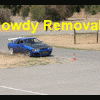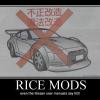R32 Gtr: I Need To Improve My Turn In/ Corner Speed
Announcements
-
Similar Content
-
Latest Posts
-
Call me the "Crazy Cat Man"...., maybe that should be my new forum name....LOL....., but seriously.....someone change it please, thanks Just grabbed the two black Oriental kittens that I ordered a few months ago to guard the house, I am assuming that because they are Orientals they know KungFu, Karate, or are Ninjas, or some other lethal fighting skill, even at only 3 months old they already have Parkour down pat Introducing...Bella & Donna
-
Hi GTSBoy, Excuse my ignorance but what does a "Bad" Knee point mean ?
-
HFM BM57 has a "bad" knee point, IIRC. It's not the same thing as the later R chassis MC.
-
The ATTESSA is functionally identical to R34; there were a bunch of JDM models that continued ATTESSA including Fuga/Q70, Skyline/Q50, Cima etc as an option. All with Auto only and I think mostly for snow regions. AFAIK there were no AWD VR30DDTT sold in Australia - it is on my to do list to check regs for racing a LHD car in Targa/ATR/AASA/CAMS events because if I can get the auto to work it would be interesting to run a 4wd car The Ecuteck TCM tuning is the same model as their ECU tuning, they already have it for R35 and Dose's favourite, BMW. You buy "points" to allow your computer to be tuned, buy either a bluetooth (phone app) or bluetooth+USB+Key (phone and PC) dongle, and pay for a tune that will be locked to your tuner ( ). You can also access the tuning software yourself but 1. it is mega expensive and 2. these computers have a billion parameters that intersect, so how could you ever spend enough time on it to get a decent result.






Recommended Posts
Create an account or sign in to comment
You need to be a member in order to leave a comment
Create an account
Sign up for a new account in our community. It's easy!
Register a new accountSign in
Already have an account? Sign in here.
Sign In Now